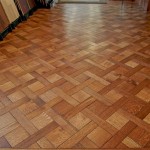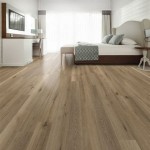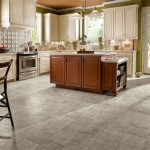Understanding Hardwood Flooring Hardness: A Comprehensive Guide
Hardwood flooring is a popular choice for homeowners due to its durability, aesthetic appeal, and potential to increase property value. However, not all hardwood floors are created equal. One crucial factor to consider when selecting hardwood flooring is its hardness, which dictates its resistance to dents, scratches, and wear over time. Understanding the Janka hardness scale, a standardized measure of wood hardness, is essential for making an informed decision that aligns with your lifestyle and expected foot traffic.
This article provides a comprehensive overview of the Janka hardness scale and its significance in selecting the appropriate hardwood flooring. It will discuss the Janka rating of various wood species, the factors that influence a wood's hardness, and how to apply this knowledge when choosing the best hardwood flooring for your specific needs. The focus is on delivering objective information to help navigate the complexities of hardwood flooring selection.
The Janka Hardness Scale: A Standardized Measurement
The Janka hardness test measures the force required to embed a 0.444-inch steel ball halfway into a piece of wood. This force, measured in pounds-force (lbf), is then assigned as the wood's Janka rating. The higher the Janka rating, the harder the wood and the more resistant it is to dents and scratches. It is important to note that the Janka rating provides a relative comparison of hardness between different wood species; it doesn't guarantee that a particular wood won't dent or scratch under extreme conditions.
The Janka scale was developed by Austrian-American botanist Gabriel Janka in the early 20th century. It provides a consistent and reliable method for assessing the hardness of various wood species, allowing consumers to compare them effectively. The scale is widely used within the flooring industry and serves as a valuable tool for both consumers and professionals.
It's crucial to understand that the Janka rating reflects the wood's resistance to indentation, not its resistance to other forms of damage, such as water damage or insect infestation. Other factors, such as the wood's density, grain pattern, and the type of finish applied, also contribute to its overall durability and performance.
Exploring Common Hardwood Species and Their Janka Ratings
Different hardwood species possess varying levels of hardness, which are reflected in their respective Janka ratings. Understanding the Janka ratings of common hardwood flooring options is essential for making an appropriate selection based on your specific needs.
Oak: Oak is one of the most popular hardwood flooring choices, known for its durability, versatility, and affordability. Red oak typically has a Janka rating of around 1290, while white oak is slightly harder, with a Janka rating of approximately 1360. This makes oak a moderately hard wood suitable for most residential applications. Its relatively high Janka rating ensures good resistance to dents and scratches from everyday wear and tear.
Maple: Maple is another popular hardwood flooring option known for its light color and smooth grain. Hard maple, also known as sugar maple, has a Janka rating of around 1450, making it harder than both red and white oak. This makes maple a good choice for homes with children or pets, where the floor is likely to experience higher levels of wear and tear. Soft maple has a lower Janka rating than hard maple, typically around 950, making it more susceptible to dents and scratches.
Hickory: Hickory is one of the hardest domestic hardwoods, with a Janka rating of around 1820. This makes it an excellent choice for high-traffic areas and homes with active families or pets. Hickory's high Janka rating provides exceptional resistance to dents and scratches, ensuring long-lasting durability. Its distinctive grain pattern also adds character and visual appeal to the floor.
Brazilian Cherry (Jatoba): Brazilian Cherry, also known as Jatoba, is an exotic hardwood renowned for its rich color and exceptional hardness. It boasts a Janka rating of around 2350, making it significantly harder than domestic hardwoods like oak and maple. This makes Brazilian Cherry a highly durable option for high-traffic areas and homes with active lifestyles. However, it's worth noting that Brazilian Cherry's color can darken over time with exposure to sunlight.
Bamboo: Bamboo flooring is often marketed as a sustainable and durable alternative to traditional hardwood. Its Janka rating varies depending on the manufacturing process. Strand-woven bamboo, which is made by compressing bamboo fibers under high pressure, can have a Janka rating of over 3000, making it one of the hardest flooring options available. However, traditional horizontal or vertical bamboo may have Janka ratings similar to or lower than oak, depending on the specific product.
Ash: Ash offers a Janka rating of approximately 1320, placing it between red and white oak in terms of hardness. It provides a good balance of durability and affordability, making it a suitable option for various residential and commercial applications. Its light color and prominent grain pattern can add a distinctive aesthetic to a room.
When selecting a hardwood species, consider the Janka rating alongside other factors such as cost, appearance, and availability. It is generally advisable to choose a wood species with a Janka rating that is appropriate for the expected level of foot traffic and activity in the area where the flooring will be installed.
Applying the Janka Hardness Scale to Your Flooring Choice
The Janka hardness scale is a valuable tool, but it should be used in conjunction with other considerations when choosing hardwood flooring. Knowing your specific needs and lifestyle is crucial in determining the appropriate hardness level. For example, a home with young children and pets will require a harder wood species than a home with only adults and no pets. Likewise, high-traffic areas such as hallways and kitchens will benefit from harder flooring options.
Consider the following factors when applying the Janka hardness scale to your flooring choice:
* Foot Traffic: High-traffic areas, such as hallways, kitchens, and entryways, require harder flooring to withstand the constant wear and tear. Opt for wood species with higher Janka ratings in these areas. * Pets: Pets, especially large dogs, can scratch and dent hardwood floors. Choose a wood species with a high Janka rating to minimize damage. Consider using area rugs in areas where pets frequently spend time. * Children: Children can be rough on floors, especially when playing. A harder wood species will be more resistant to dents and scratches caused by toys and other objects. * Lifestyle: Consider your overall lifestyle and how you use your floors. If you frequently entertain guests or engage in activities that could potentially damage the floor, a harder wood species is recommended. * Budget: Harder wood species often come with a higher price tag. Consider your budget and prioritize the areas where you need the most durable flooring.Beyond the Janka rating, other factors contribute to a floor's overall durability and appearance. These include:
* Finish: The type of finish applied to the hardwood floor can significantly impact its resistance to scratches and wear. Durable finishes, such as polyurethane, provide a protective layer that helps to prolong the life of the floor. * Acclimation: Properly acclimating hardwood flooring to the environment before installation is essential for preventing warping and cracking. This involves allowing the wood to adjust to the temperature and humidity levels of the room. * Installation: Proper installation is crucial for ensuring the longevity and performance of hardwood flooring. It's recommended to hire a professional installer with experience in working with hardwood floors. * Maintenance: Regular cleaning and maintenance are essential for preserving the beauty and durability of hardwood flooring. This includes sweeping or vacuuming regularly to remove dirt and debris, and occasionally cleaning with a damp mop and a wood floor cleaner.Ultimately, the best hardwood flooring choice depends on individual needs and preferences. The Janka hardness scale is a valuable tool for comparing the relative hardness of different wood species, but it should be used in conjunction with other considerations such as lifestyle, budget, and aesthetic preferences to make an informed decision.

Janka Hardness Scale Superior Flooring

Janka Hardness Scale Impressions Flooring Collection

Essential Guide To Hardwood Floor Hardness Flooring S

Hardwood Rating System And Why It Is Important In Dallas Fort Worth Tx All American Flooring

Wood Flooring Hardness Sullivan Hardwood Llc

The Janka Scale Blog Kt Hardwoods Inc

Janka Wood Flooring Hardness Chart

What Is Janka Hardness And Why Does It Matter Anthology Woods

Hardwood Hardness Ratings Woodchuck Flooring San Diego

Durability National Wood Flooring Association Nwfa
Related Posts








